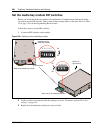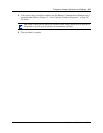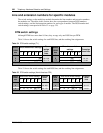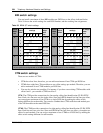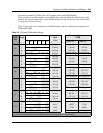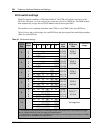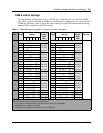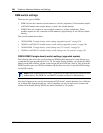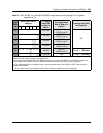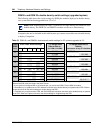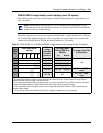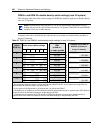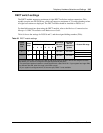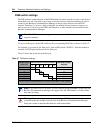
338 Telephony Hardware Selection and Settings
P0993133 03
DSM switch settings
There are two types of DSMs:
• DSM 16s have one connector which connects to 16 lines (telephones). These modules require
a full DS30 number each (single density), or half a bus (double density).
• DSM32s have two connectors, each of which connects to 16 lines (telephones). These
modules require two full, consecutive DS30 numbers (single density) or one full bus (double
density).
This section includes these charts:
• “DSM16/DSM 32 single density switch settings (upgraded system)” on page 338
• “DSM16+ and DSM 32+ double density switch settings (upgraded system)” on page 340
• “DSM16/DSM 32 single density switch settings (new 3.0 system)” on page 341
• “DSM16+ and DSM 32+ double density switch settings (new 3.0 system)” on page 342
DSM16/DSM 32 single density switch settings (upgraded system)
The following table shows the switch settings for DSM modules deployed as single density on a
system that has been upgraded from 2.5 to 3.0. For single-density modules, you set the first DS30
number on the DIP switches, and the system assigns the next DS30 bus. Note in Table 62 how the
DSM32 module spans two DS30 bus numbers and that there are only five possible DS30 settings
for the DIP switches.
Note that Companion sets can only be assigned on DS30 6 and 7, and the handsets have a different
set of default DNs than the digital sets. Also, Companion can only be deployed on systems that
remain at Part Double Density (PDD), the default condition of 3.0 systems.
Note: DSM modules deployed with 2.5 systems are all single density and cannot be set to
double density. The DSM 16+ and DSM32+ modules can be set to either density.



